The blackjack oak stands like a skeletal sentinel on the northeast corner of my yard, partnered with a 70-foot white pine. The pair overlook young elms and redbuds fighting for survival against an ever-encroaching horde of invasive privet. Two branches fork from the hollowing corpse of the tree’s trunk as if in plaintive supplication. The scene calls to mind the parable of the rich man in hell begging for but one drop of water from the finger of Lazarus to quench the fires on his tongue. Virginia creeper vines grip the deep-grooved corky bark projecting an aura of living green overlaid on dark charcoal. But it’s an illusion.
Blackjack oaks are tenacious survivors. They thrive along with post oaks, red cedar and hickory in the dry, sandy, rocky uplands of my home in Arkansas’s southern Ozarks and River Valley region. Poor soils and tough conditions are their preference. An austerity of needs likely doesn’t correlate with the tree’s average lifespan of 100 years (one blackjack oak in Oklahoma was aged at 230) they just happen to be long-lived. But you never know, and I’ve taken cues on living a more Spartan existence from the blackjack oak while in search of a few more years for myself. The trees look the part of grizzled survivors from their alligator-hide bark to the broad, round-lobed, leathery leaves of basil green on top and felt-lined tawny below. Their branches tend to droop and there’s always an array of dead limbs mid-tree. Like a lizard surrendering its tail to a predator, the blackjack’s dead limbs are a survival sacrifice for when times got tough.
For the last few years, as April came into view, I’ve watched with hope for some verdant sign of life from the oak. More than once, I thought it was dead, but the oak came through. Even as branches as big around as my thigh fell to the raging winds of spring thunderstorms, the oak clung to life, sprouting a few new buds followed by pollen-filled catkins.
As the foundation for most forest ecosystems in Arkansas, oaks of every species hold a place of reverence in my heart. A poor mast crop can affect survival and reproduction of whitetails, black bears, squirrels, turkeys and several other species for years afterward. Acorns also contain genetic blueprints for the hardwood forests of tomorrow, those my granddaughters will fall in love with, though I’ll never see. Acorns, even the little striped blackjack oak acorns, hold the future for so much of what I cherish. And so, as I observed the bare blackjack oak on a mid-spring day in 2016, I didn’t want to call it—to actually say out loud that the tree was dead before its time — even though it was clear.
The death blow had likely come in 2012. The summer of 2012, though not the hottest on record, was the closest to hell’s fire in my memory.The simmer started in February with a string of 85-degree days and no shade in our tree-filled backyard. We were still two and half months from leaf-out. I recall prairie lizards basking on a cedar stump entwined in dormant honeysuckle. Bizarre doesn’t begin to describe it, but these were only the first of many surreal experiences that year. Everything was confused, including me.
More Like This
As spring came flaming in with summer heat, I first wet-waded the creek in March, an activity usually reserved for at best the latter part of April. I put tomatoes in the ground in early March — it was still winter — and had my first-ever ripe tomato on Memorial Day weekend. I’d never before had a ripe tomato prior to July. And then the rains stopped forever, we thought, as a high pressure system parked over our state casting a searing heat and blocking frontal passages for weeks on end. 2012 saw the driest April to July stretch recorded in Arkansas history.
Arkansas summers are notoriously fierce with a brutal one-two punch of extreme humidity (we get Gulf of Mexico moisture without the pleasures of a beach) and usual high-90 readings with lows rarely dropping below 70. But summer 2012 heat was a summer heat of note. Temperatures climbed beyond 110 degrees Fahrenheit for days. My favorite creek dried up to mere puddles, the last scraps of salvation for skinny smallmouth bass desperately hanging on. Our hardwoods dropped most of their crisped leaves in August. On one night, the porch thermometer read 100 degrees an hour after the flaming sphere had sunk behind Ozark hills. Crickets, cicadas, and katydids, usually a deafening raucous jumble of native song on Arkansas summer sundowns, were eerily quiet. Everything was still and lifeless.
I have no evidence, only a gut feeling, but I believe on this night of somber silence the blackjack oak was pushed to its end.
Arkansas has escaped some of the most hellish ravages of climate change. We’ve been spared the wildfires and, as a land blessed with water, shortages never reached catastrophic levels even in 2012. Oddly, the last few summers, actually all since 2012, have been marked with excessive rain. The summer of 2016 was particularly damp, almost spitefully so. I recall a remark from a friend, an old-timer of seven decades who typically leans toward understated: “No one is saying this summer is the wettest since so-and-so because no one has seen a summer this wet — ever.” Our Ozark creeks were brimming with runoff, I’m talking spring-levels of kayaking white water, into August. This was an event previously unheard of, yet, repeated in the summer of 2017 and 2018. The blown-out creeks kept me from the fishing holes I’d been daydreaming about since the previous autumn.
Summer 2016 decided to stick around past it’s curfew. My last wet wade that year was on November 16 — two days after modern-gun deer season had opened and three weeks after our usual first hard frost. Mid-November is typically when the trees go bare in my region, but I recall cicadas buzzing from a still mostly green and leafy forest as spotted bass hammered big poppers in the bath-warm water. My tomato plants and watermelon vines were blooming like it was June. My dog picked up new ticks every day.
This year, 2018, the strange weather happened in spring again, but on the opposite end of the spectrum, with freezing temperatures extending into mid-April’s turkey season. The Ozarks were leafless until May and gobbling birds were at a premium within Arkansas’ already decimated population, perhaps another casualty of not adapting quickly enough to a rapidly changing climate. Some of the blame for poor turkey hatches has been placed on abnormally hot and wet late-spring weather — both detrimental to turkey poult survival.
It’s clear that an increasingly strange mix of weather over the last decade is disrupting natural cycles. But on a more personal note, it’s also disrupting the experiences of my life that are melded with seasonal normalcy. As something of a Paleo-nerd, I’m well aware that climate has been forever changing since a spinning, steaming Earth first cooled from its fiery galactic birth. I know the difference between climate and weather. Weird weather is jokingly called the norm here in Arkansas. But a consistent pattern of weird weather over the course of many years is the very definition of a shifting climate. And this broader, more ominous change occurring at a rate far faster than nature ever produced, is leaving us and some of our fellow non-human earthlings dazed and puzzled. Like the trout lilies blooming six weeks early, the spring peepers catching moths by my front porch light on Christmas Eve, the prairie lizard sunning on a cedar stump in early February, my own seasonal calendar is scrambled.
I hate math. Throw some numbers, some “parts per million” my way and my eyes glaze over near instantaneously. I never much cared for graphs and charts in school, either, and I sure as hell don’t care to pore over them now. But I don’t need some lab coat to tell me natural cycles of weather are out of whack. As a lifelong hunter and angler I can see it with my own eyes and feel it on my skin.
It’s all merely anecdotal evidence, of course, something I’m loathe to use as proof of anything. But in our day-to-day existence as merely humans, what else do we have to make sense of our world? How else can we construct a bridge between what science tells us and its effect on our lives other than to admit we are in fact experiencing these changes to the world with our animal senses? Human, whitetail deer, wild turkey, smallmouth bass, crawfish, blackjack oak … we are all so very close, much closer than most realize, and so tightly intertwined. As one goes, so likely go the others. Take away the crawfish and smallmouth bass would soon starve. Remove the oaks and so go the deer, turkeys, and squirrels. As a man of the Southern highlands born and bred, made of deer, turkey, and squirrel, this concerns me because in truth, I am made of oak.
Earth and Arkansas will survive whatever we can throw at them, more carbon, more methane, whatever. I’m not worried about Earth and Arkansas. I’m worried about bass and darters, and my experiences with these little lives that so profoundly shape mine being altered irrevocably for the rest of my days. I’m worried about whitetail bucks running does on 85-degree November days after a summer tick infestation of biblical plague proportions. I’m worried about the salamanders, the buckeye butterflies and trilling screech owls for the their own sake but also because I fear I won’t know them like I once did. I worry that my granddaughters may never experience the natural cadence of an Arkansas I grew up with. Will they know those ancient rhythms of home that gently beckoned me toward a love for the land, the waters, and those beings who showed me the wonder of the uncivilized wild world? I worry that those seasonal markers — witch hazel blossoms, the chuck-wills-widow song, booming bullfrogs, plump purple muscadines — won’t be the same for them. Some may not be there at all.
I’ve left the dead blackjack oak standing in my yard, allowing it to fall to earth piece by piece as nature dictates. Its carcass is a haven for insects; red-bellied and pileated woodpeckers chisel through its failing bark daily mining for food. But I also left it there for me. The tree reminds me that even the most tenacious can withstand a push beyond their ability to cope for only so long. I wonder how much longer we have. Not necessarily in regards to survival, though, that is a concern as well. But how much longer do we have to experience the Natural State and the South as we once did, as Mom and Dad did, as my grandparents did, as outdoors folks and nature lovers still guided by the seasonal shifts of wind, rain, and sun do? How much longer can we know that what we once thought timeless and unchanging, the blooming blackberry brambles of May or the tumbling acorns of October, will be here tomorrow?








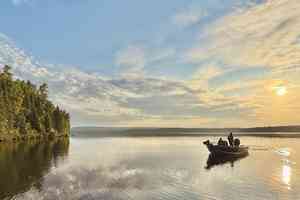



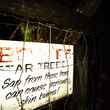



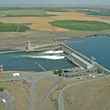




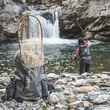
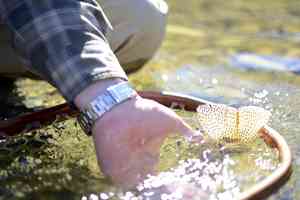


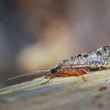


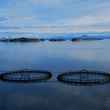

Comments